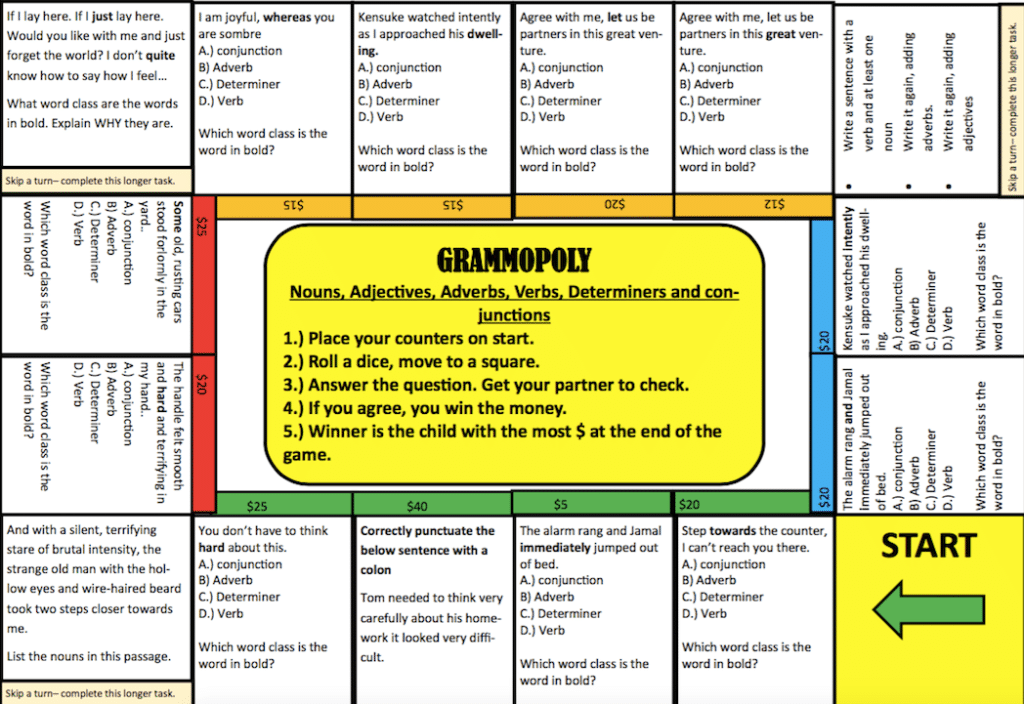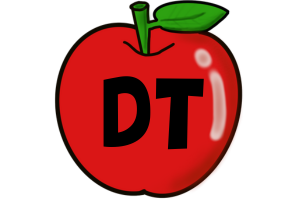Introduction
Determiners play a crucial role in the English language, as they provide essential information about nouns and help to specify their reference or quantity. For ESL (English as a Second Language) learners, understanding and using determiners accurately can significantly enhance their language proficiency and communication skills. ESL teachers have the responsibility to guide learners in mastering determiners effectively.

One effective way to achieve this is through engaging activities and thought-provoking questions that facilitate active learning and deeper comprehension. This article presents a collection of activities with accompanying questions specifically designed for ESL teachers to incorporate into their lessons. These activities aim to reinforce learners’ understanding of determiners, promote language production, and foster critical thinking. By integrating these activities into their teaching practice, ESL teachers can create engaging and dynamic learning environments that facilitate the effective acquisition and usage of determiners among their students.
Examples of How to Use Determiner Activities
- Determiner Identification: Provide a list of sentences or short passages that include determiners. Ask the learners to identify the determiners in each sentence and explain their function. For example:
- “The cat is sleeping on the mat.” Question: What is the determiner in this sentence? What is its function?
- “I bought some apples at the grocery store.” Question: Identify the determiner in this sentence and explain its purpose.
- Determiner Sorting: Prepare a set of cards with different determiners written on them. Ask the learners to categorize the determiners into groups based on their type (e.g., articles, possessive determiners, demonstratives). Encourage learners to discuss their categorization choices and explain the rules they used to sort the determiners. Example questions:
- Sort the determiners “a,” “an,” “the,” and “this” into appropriate groups. Explain the basis for your categorization.
- Place the determiners “my,” “his,” “their,” and “your” in the correct category. Justify your choices.
- Determiner Gap Fill: Create sentences with gaps where determiners should be inserted. Provide a word bank with different determiners and ask learners to choose the appropriate determiner for each gap. For example:
- “______ book on the table belongs to me.” Question: Select the correct determiner from the word bank: “a,” “an,” or “the.” Justify your choice.
- “Can you give me ______ cup of tea?” Question: Fill in the gap with the appropriate determiner from the options: “some,” “any,” or “no.” Explain your decision.
- Determiner Error Correction: Provide a set of sentences that contain errors in the use of determiners. Ask learners to identify and correct the errors. Example questions:
- “He have many friends.” Question: Correct the determiner error in this sentence and explain the correct usage.
- “I need buy a new laptop.” Question: Identify and rectify the determiner mistake in this sentence. Provide the correct determiner and explain why it is appropriate.
- Determiner Discussion: Present a topic or theme and provide a list of determiners related to that topic. Ask learners to discuss and formulate sentences using the determiners. For example:
Topic: Travel Determiners: “some,” “any,” “a few,” “several” Question: Discuss a travel experience and use at least two of the given determiners in your sentences.
- Determiner Comparison: Choose two or more determiners with slight differences in meaning or usage, such as “some” and “any.” Provide examples and ask learners to compare and contrast the usage of these determiners. Example questions:
- Compare the determiners “some” and “any” in terms of their meaning and usage. Provide examples to support your explanation.
- Explain the difference between “few” and “several” as determiners. Use examples to illustrate their distinct uses.
- Determiner Role Play: Assign roles to learners, such as a shopkeeper and a customer. Provide a scenario where determiners are essential, such as buying groceries. Learners must engage in a conversation using appropriate determiners to complete the role play successfully. Example question:
Role Play Scenario: A customer is at a grocery store and wants to buy fruits and vegetables. The shopkeeper asks about the quantity. Question: As the customer, respond to the shopkeeper’s question using appropriate determiners for quantities.
- Determiner Quiz: Create a quiz with multiple-choice questions or fill-in-the-blank exercises focusing on determiners. Use a variety of contexts and sentence structures to test learners’ understanding and usage of determiners. Example questions:
- Select the correct determiner to complete the sentence: “I have _______ apple in my hand.” a) a b) an c) the d) some
- Fill in the blank with the appropriate determiner: “There are ______ books on the shelf.” a) a few b) much c) this d) their
- Determiner Storytelling: Ask learners to create a short story or narrative that includes various determiners. Encourage them to use determiners effectively to provide details and descriptions in their storytelling. Example question:
Write a story about a family vacation using at least five different determiners to enhance the descriptions and narrative.
- Determiner Game: Design a board game or card game where learners must correctly use determiners to advance. Incorporate challenges, questions, or prompts related to determiners to make the game both educational and enjoyable.
What Are Determiners?
Determiners are spread across almost every sentence we use, and most of us are idyllically unaware of it.
Simply put, determiners are words positioned in front of a noun or a noun phrase to make it clear which thing or object is being referred to. They’re considered to ‘mark‘ noun phrases or nouns.
In short, determiners are followed by a noun or a noun phrase.
To make it more understandable, here are a few examples that may help. Determiners indicate the reader we are referring to:
- a general or specific thing – a classroom or the classroom
- how many – several books, lots of students
- something we are pointing at – that display, this work
- something owned by someone – her homework, his pen
- a set number of objects – three desks, two chairs
- questions – what pen, which chair
Why Teach Determiners to Students?
The selection of determiner to come before a noun phrase/noun is generally not an issue for native English speakers. Nonetheless, it often can be a problem for ESL students, particularly for students belonging to Eastern European countries. Because languages, there has an altogether dissimilar system of determiners.
Thus, teaching determiners to ESL students is an extremely crucial part of learning the English language.
Types of Determiners
There are numerous types of determiners, but the most commonly used are:
Articles: These refer to a general or specific thing – the house or a house. In the English language, there are only three articles: the, a, and an.
Quantifiers: These indicate how many – several books, many students
Possessives: These refer to some object or thing owned by someone – her pen, his homework.
Demonstratives: These indicate something we are pointing at – that display, this work.
Numbers: two desks, three chairs.
Questions: what pen, which chair
Distributives: either, neither, all, both, half, every, each.
Difference words: another, other.
Pre-determiners: what, such, rather, quite.
Most classifications encompass only a limited number of members. This restricted nature of most sets helps to illuminate why determiners are set apart from adjectives though both assist a modifying function.
Additional Useful Determiner’s Activity for Learners
With the help of the following activities on determiners, your students will be able to:
- use determiners within sentences
- identify determiners within a sentence
So, let us begin!

Springboard activity
- Project an image of several minions.
- Ask a student from the class to point to the minion. When they select one, tell them they picked the wrong one.
- Tell them to explore what went wrong. Clarify that you wanted a specific minion. How will you better ask the question to specify you had a particular minion in mind?
“That minion,” “any minion,” “a minion with glasses,” “the blue minion,” “this minion.”
- But be very careful and try not to confuse adjectives here too much. Try to display that the determiners are assisting in clarifying what noun you’re referring to.
Fill in The Blanks With a Twist!
Fill in the blanks activity is among the most common activities used for language learning. They involve putting the right phrase or word in empty spaces to complete a sentence. This exercise has proven to be useful not only for ESL students but also in the language development of younger learners. Hence, as a teacher, you must incorporate this activity into your lesson plan.
Bear in mind that after a while, younger students might be less eager to try these kinds of activities. Thus it is a good idea to integrate some twists into it to make them engaging and fresh again.
Below are two ideas to make fill in blank exercises more interesting for your younger students, depending on the materials you have available:
Use a whiteboard: Utilize various colored markers to write few sentences with determiners on a whiteboard (perhaps involve some images too!), but make sure to leave a blank space where determiners are supposed to go.
Then, ask your students to fill in the blanks with the correct answers. Students, especially young, love to participate and to get the opportunity to prove themselves, so they will be eager to write on the whiteboard.
Go big: Grab a huge sheet of paper and jot down some sentences with examples of determiners in English. These will perform as an example. Then, jot down some more sentences but leave a blank space where the determiner needs to be placed.
Next, cut out some cards with determiners -one word per card- and ask students to position the correct determiner in its correct place with few reusable adhesives.
Although these activities are perfect for more able students, younger students can also greatly benefit from them.
This determiner’s activity is also excellent to practice the overall English language.
Main activity #1:
Working in pairs and circulate sentences, including different determiners among students and ask them to circle the determiners:
- The minion with the most hair
- A big minion has turned purple
- Two minions are sticking their tongues out
- Those minions are silly
Main activity #2:
Ask your students to come up with five sentences and use as many determiners in it as possible. Make it more fun by challenging them to include at least fifteen or twenty determiners?
Main activity #3:
Utilize the class reading book or passages linked to the current class topic and ask your students to circle as many determiners as possible.
In addition, make it more challenging for more able students by instructing them to underline the articles “the,” “a,” or “an” and ask how “a and “an” work differently from “the” (grammatically classified as definite and indefinite articles respectively).
Determiners Board Game
Besides the above activities on determiners, you can play the determiners board game to make understanding determiners not just easy but also fun for your students. Below is an illustration of a determiners board game. But you can always make up your own!

Support Card
Noun – ‘something’ concrete nouns you can see, touch, hear or feel. Abstract nouns are still something you cannot see, touch, hear or feel them, for example, sorrow, love, hate etc.
Adjective – describes or modifies a noun. It adds information to the noun for example, the ball was hard, the quiet girl.
Adverb – adds or modifiers information to the verb.
Conjunction – joins two words or clauses
Determiner – specifies or determine the noun. Indicates how many of the noun there is. For example, few men, those cats, a bag.
Determiners Song
Another fun and effective way to teach students about determiners is through a determiner song. You can find numerous fun determiner songs online. An example of one can be seen below:
Words that come before a noun,
oh, oh, oh, oh, Determiners. Words that come before a noun,
oh, oh, oh, oh, Determiners.
Words that tell us how many there are,
oh, oh, oh, oh, Determiners.
Words that tell us which none you mean,
oh, oh, oh, oh, Determiners.
Words that ask us what you are talking about,
oh, oh, oh, oh, Determiners.
His bag, her car, their cool electric guitar,
what ghost? those slippers, my crunchy chicken dippers,
a few crisps, several mice, I would like less rice,
many friends, these dogs, hundred and hundreds of logs.
Words that come before a noun,
oh, oh, oh, oh, Determiners.
Words that tell us how many there are,
oh, oh, oh, oh, Determiners.
Words that tell us which none you mean,
oh, oh, oh, oh, Determiners.
Words that ask us what you are talking about,
oh, oh, oh, oh, Determiners.
The dog, an egg, their lovely, red peg,
three cups, some cheese, lots of strawberries,
Which chair? what plan? whose nice, colorful fan?
This map, those cats, these perfect, little rats.
Determine means tell;
determiners are telling words.
How many? which thing?
What you’re talking about..
Words that come before a noun,
oh, oh, oh, oh, Determiners.
Words that tell us how many there are,
oh, oh, oh, oh, Determiners.
Words that tell us which none you mean,
oh, oh, oh, oh, Determiners.
Words that ask us what you are talking about,
oh, oh, oh, oh, Determiners.
For the animated version of the song, click here.
Closing Thought
In conclusion, incorporating determiner-focused activities and questions into ESL lessons can greatly benefit both teachers and learners. By engaging in these activities, learners have the opportunity to deepen their understanding of determiners and enhance their language proficiency. The activities encourage active participation, critical thinking, and application of knowledge, leading to a more comprehensive grasp of determiner usage.
Through activities such as determiner identification, sorting, and gap filling, learners develop their ability to recognize and select appropriate determiners in context. Error correction exercises enable them to refine their language skills by identifying and rectifying common determiner errors. Engaging in discussions and role plays related to determiners promotes oral communication and fosters a deeper understanding of how determiners function in real-life situations.
Additionally, activities that involve comparison, storytelling, quizzes, and games provide learners with opportunities to apply their knowledge creatively and reinforce their understanding of determiners. These interactive tasks make learning enjoyable, stimulating, and memorable.
For teachers, utilizing these activities allows for effective and engaging instruction while addressing the specific language needs of learners. The activities promote learner-centered classrooms, encouraging active participation, collaboration, and language production. By incorporating a variety of activities, teachers can cater to different learning styles and reinforce key determiner concepts.
Incorporating determiner-focused activities and questions not only enhances learners’ understanding of determiners but also strengthens their overall language proficiency. It improves their grammatical accuracy, vocabulary usage, and communication skills. Learners become more confident in their ability to use determiners appropriately, both in spoken and written English.
By utilizing these activities, ESL teachers can create dynamic and interactive learning environments that support and scaffold learners’ language development. As learners engage in meaningful and purposeful tasks, they gain a deeper understanding of determiners and their role in English language usage.
Overall, the inclusion of determiner activities and questions in ESL lessons fosters a deeper understanding of determiners, enhances language skills, and promotes effective communication. These activities empower learners to confidently navigate the complexities of determiners, equipping them with essential language tools for effective communication in English.


